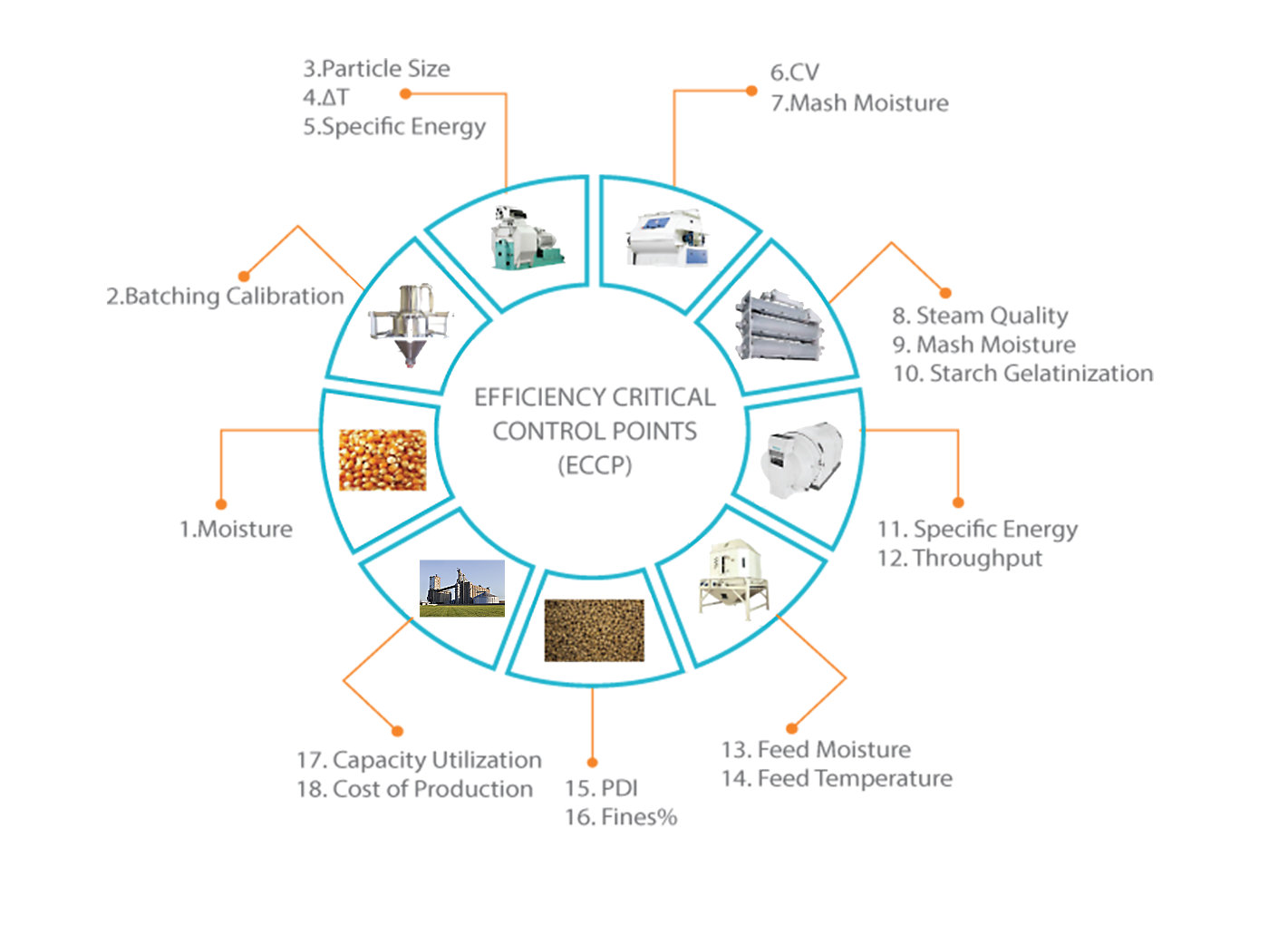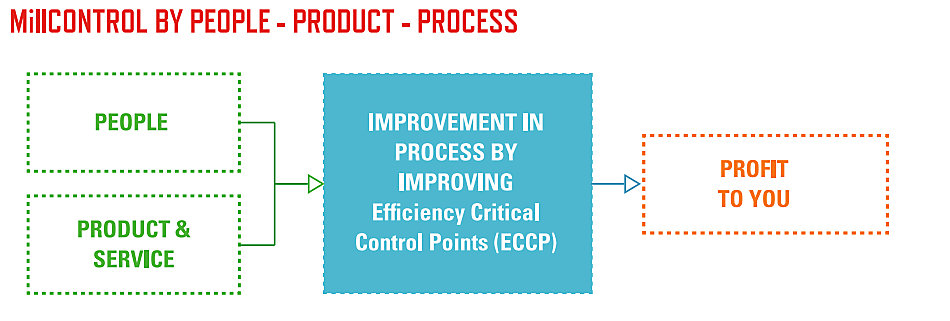You are viewing South Asia
- United States
- Canada
- Mexico
- South America
- EMENA
- Sub-Saharan Africa
- Russia
- South Asia
- Asia Pacific
- China
A global presence, with local expertise. Visit our regional sites:
- United States
- Canada
- Mexico
Popular Searches
- Animal Nutrition & Health
- MillSMART™
MillSMART™
MillSMARTTM improves Feed Mill Efficiency by measuring, analysing and controlling the Efficiency Critical Control Points hence reducing the cost of production of feed while enhancing the pellet quality. During the last two decades of working and partnering with feed mills, we at Kemin have identified eighteen (18) such efficiency critical control points. All these ECCP’s are to be maintained within the standard range to achieve maximum efficiency in feed milling.

MillSMARTTM – Three phases for improving feed milling efficiency
- MillSCAN - In this phase a certified feed mill engineer visits the targeted feed mill and measures various Efficiency Critical Control Points. In this process engineers utilise Kemin’s Customer Laboratory Services to accurately measure the Efficiency Critical Control Points.
- MillSCORE - Our engineering team utilises various sophisticated tools such as the MillSCORE app to ascertain the current score of the feed mill in terms of its efficiency. Kemin engineering team will make and submit a MillSCORE report comparing all 18 ECCPs against their standard value.
- MillCONTROL - In this phase, we’ll suggest corrective actions to bring all ECCPs within the standard range. We achieve MillCONTROL by using PPP model: where our People & Product improve the Processes

MillSMART encompasses MycoCURB, KemWET and KemBIND range of products.
To learn more about MillSMART™, please contact your Kemin representative today.
Improving Starch Gelatinization in Animal Feed
What is Starch Gelatinization?
Starch gelatinization is a process of breaking down the intermolecular bonds of starch molecules in the presence of moisture and heat; both of these conditions are present in conditioner.
What Factors Affect Starch Gelatinization?
The type of starch can influence its properties for gelatinization. Temperature and moisture are two important pre-requisites for gelatinization of starch. Retention time also plays an important role.
How Can Starch Gelatinization Be Measured?
There are many methods ranging from turbidity and solubility to magnetic resonance spectroscopy and differential scanning calorimetry.
What is the Benefit of Starch Gelatinization?
Starch gelatinization has a direct relationship with pellet durability index (PDI) and starch digestibility. The degree of starch gelatinization also influences specific energy and throughput of a pellet mill.
What is the Ideal Starch Gelatinization Value?
In our internal research, we have found a huge variation in the degree of gelatinization across the Indian sub-continent. It ranges from 10 to 25 percent, which can be attributed to variable processing conditions.
How Can Starch Gelatinization be Improved?
The degree of starch gelatinization can be enhanced by improving steam quality. Cold mash conditioning using surfactant-based products also helps improve starch gelatinization.
Where Can I Get Starch Gelatinization Analyzed?
Kemin has developed a method to estimate the degree of starch gelatinization in animal feed. Our method is one of the most accurate methods, as it is based on the enzymatic assay. We are the first one to do so in animal feed sector in India.
Contact Kemin Animal Nutrition & Health - India
Careers
Careers
- California Supply Chain Act
- Email Disclaimer
- GDPR Personal Data Addendum
- General Terms & Conditions for Vendors
- Global Environmental Policy Statement
- Indirect Cost Estimates
- Kemin Terms & Conditions
- Modern Slavery Act Transparency Statement
- Privacy Policy
- Sitemap
© Kemin Industries, Inc. and its group of companies all rights reserved. ® ™ Trademarks of Kemin Industries, Inc., USA
Certain statements may not be applicable in all geographical regions. Product labeling and associated claims may differ based upon government requirements
You are viewing South Asia
- United States
- Canada
- Mexico
- South America
- EMENA
- Sub-Saharan Africa
- Russia
- South Asia
- Asia Pacific
- China
A global presence, with local expertise. Visit our regional sites:
- United States
- Canada
- Mexico
Privacy Policy
By browsing this site you permit us and our partners to place identification cookies on your browser and agree to our use of cookies for marketing. Review our cookies policy for details.

